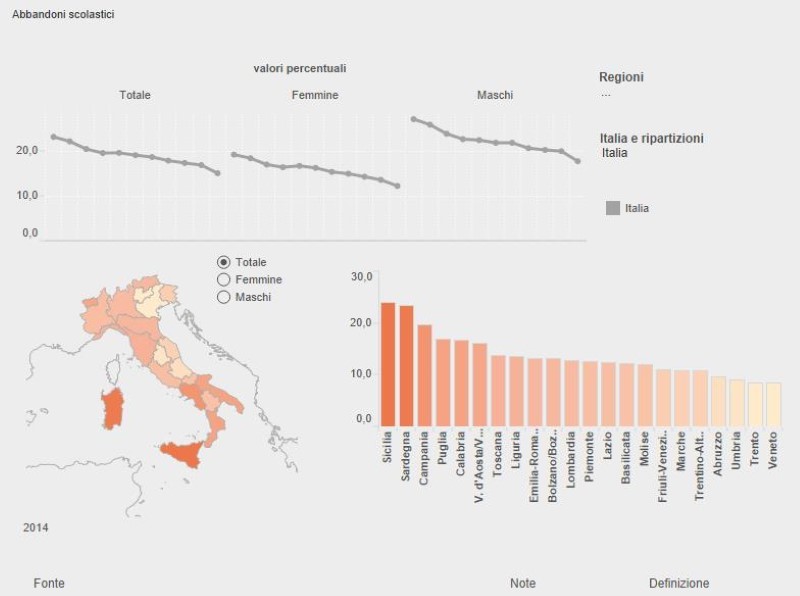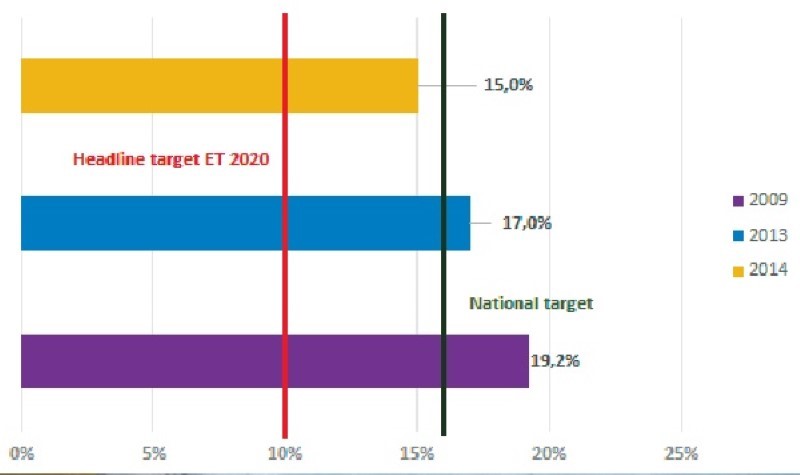EARLY SCHOOL LEAVERS IN ITALY
(INDIRE 2015)
EARLY SCHOOL LEAVERS*
15% Total— 17,7% Male, 12,2% Female
(34,4% of the migrant population are ESL)
*This indicator in the Italian education system, is equivalent to the percentage of the population aged 18-24 who, after obtaining at most their middle-school certificate (lower secondary school) did not complete a two years vocational training course recognised by Public Administration and are not attending school courses or other training activities. 


ESL rate decreased constantly in the last ten years (ISTAT 2015)

Early school leavers: regional differences (ISTAT 2015)
Survey about “Ideal School”
The results of the survey are indicated in four graphs :

1) Male students 14 – 15 aged

2) Male students 16- 18 aged

3) Female students 14 – 15 aged

4) Female students 16 – 18 aged
RESEARCH ABOUT DROP OUT
We started our research making enquiries about drop out reasons in our school in order to know how to prevent this problem.We conducted this research on the students who are at risk of dropping out (they occasionally attend the school) and on the students who dropped out (did not attend the school)
Used tools were: questionnaires and interviews.
Questionnaire about Drop-out reasons in our school (students at risk)
We made a survey in our school to identify the main reasons why the students drop-out from the school.
We have given to the tutor teachers of the first and the second year classes of the school, a questionnaire in which are indicated the main drop-out reasons according to a study made by EURISPES ( Italian study organization) on this topic. The most common reasons were: Parent’s overexpectation,
- Parent’s overexpectation
- Low income
- Inadequate method of study
- Bad terms with schoolmates
- Difficulty in adapting to study rate
- Lack of motivation
- Fault in educational background
- Problems in attending the first year of high school
- Personal or family problems
- Student repeating the year
- Poor educational continuity to high school
- Poor guidance to high school
- Lack of parent’s support
- Poor family involvment in school life
The tutor teachers indicated for each student at risk of dropping out, the reasons (2 or more) and how much ( limited, sufficient, high) they influence.
The results of the survey are indicated in four graphs : 5, 6, 7, 8
The results of the survey showed that LACK OF MOTIVATION is the most common reason for dropping out, followed by Inadequate method of study, Difficulty in adapting to study rate and Fault in educational background.

5) First year Technical courses

6) Second year Technical courses

7) First year Vocational courses

8) Second year Vocational courses

